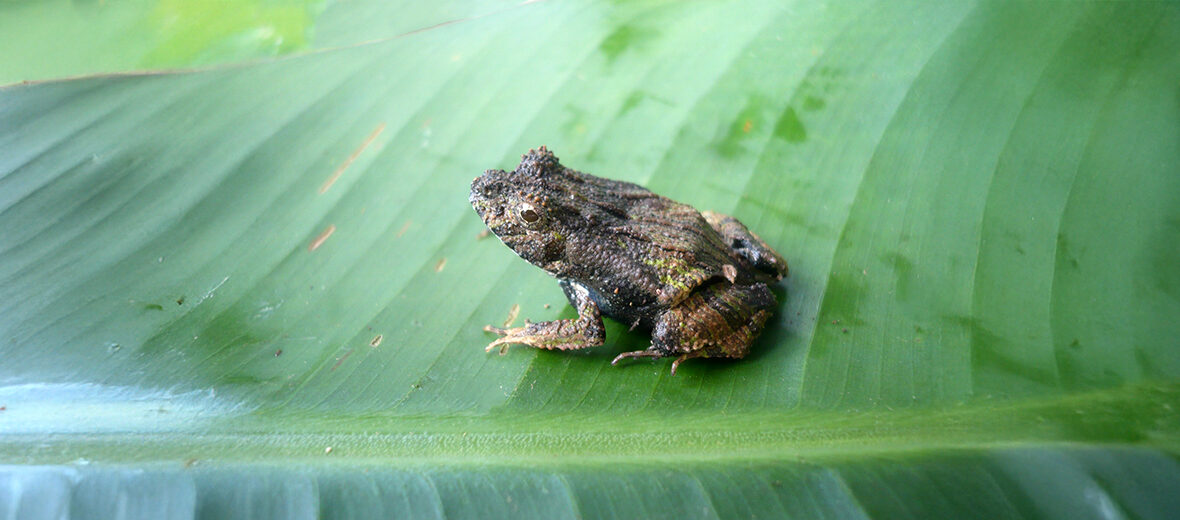
The Perez’s snouted frog is but 1 of the only 2 species in the genus Edalorhina in the family Leptodactylidae. They can be found in Brazil, Colombia, Ecuador, and Peru, and potentially in Bolivia. These frogs prefer subtropical or tropical moist lowland forests, subtropical or tropical moist montane forests, as well as freshwater marshes. Snouted frogs face the threats of habitat loss and destruction at the hands of farming, ranching, and logging. The deadly Chytrid fungus might also be a factor in their potential demise, going forward, but this has not been studied. However, these frogs are abundant and widespread, with ample habitat (thus far) to dwell in. Therefore, the IUCN lists these critters as Least Concern. Their population trend is listed as stable.
First the Stats…
Scientific name: Edalorhina perezi
Weight: Up to .16 ounce
Length: Up to 1.57 inches
Lifespan: Up to 7 years
Now on to the Facts!
1.) These frogs are diurnal (active during the day).
2.) They are a terrestrial species of frog. This means that they spend most or all of their time on the ground.
3.) There is quite a bit of variation in these amphibian’s morphology. An early study conducted by Dunn in 1949 studied 52 specimens and showed dissimilarity in vomerine teeth (small, sharp projections located on the vomer bone in the roof of the mouth) and dorsal skin structure. The study classified this species into 3 morphs: perezi, plicifrons, and buckleyi.
4.) Cockroaches, spiders, crickets, other arthropods, and worms are all on the menu.
5.) Amplexus (the mating position of frogs and toads, in which the male clasps the female from the back) can last up to 6 days, but the actual mating only takes place for 4 – 6 hours.
But wait, there’s more on the Perez’s snouted frog!
6.) Both the male and female construct a foam nest at the water’s edge. This nest takes up to 60 minutes to build.
7.) Females lay upwards of 154 eggs that are deposited in the foam nest.
Did you know…?
The male’s mating call consists of a series of 3 – 5 short, low whistles and 2 pulses per note. The volume has been measured at up to 2,700 Hz – 7,800 Hz.
8.) Tadpoles measure in at up to 1.17 inches in length.
9.) The tadpoles feast primarily on detritus, however, they also cannibalize other tadpoles and eggs.
10.) It takes up to 28 days for the tadpoles to metamorphose into froglets.
11.) When startled, they will turn away from the threat and elevate their sacral region to suddenly expose macroglands, which show off a hidden flash coloration which looks like a pair of huge eyes belonging to a larger animal.
Now a Short Perez’s Snouted Frog Video!
Be sure to share & comment below! Also, check out the Critter Science YouTube channel. Videos added regularly!

Want to suggest a critter for me to write about? Let me know here.
Some source material acquired from: Wikipedia & IUCN
Photo credit: Erfil



